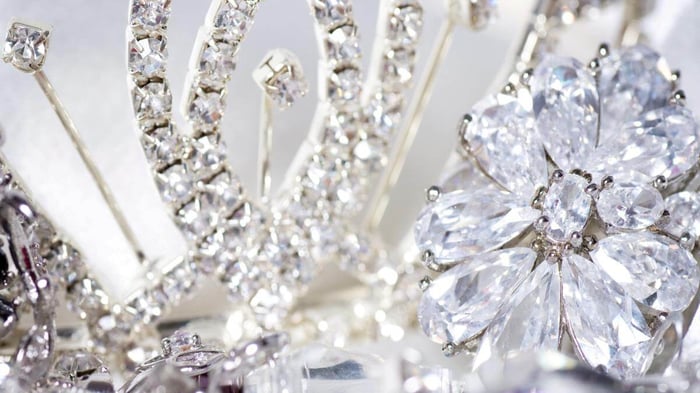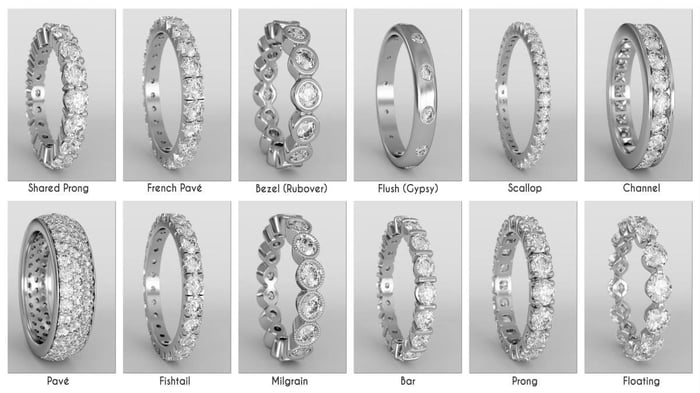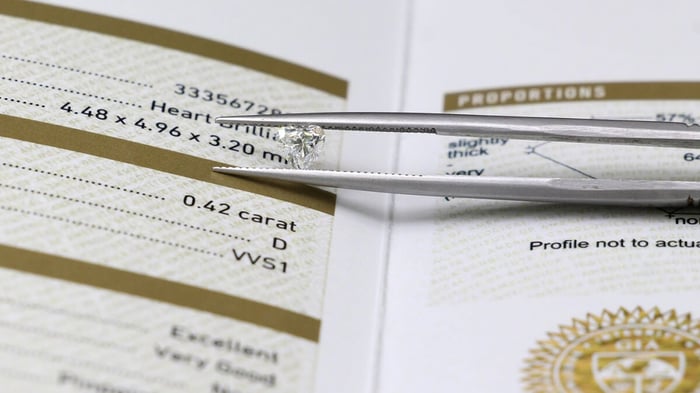A Dictionary Of Jewellery Jargon And Specialist Terms To Help You Get The Best From Your Jewellery Purchases
It can’t be avoided, just like any business the jewellery business has plenty of jewellery jargon to describe its products. To help you decipher what you might see on jewellery websites or hear jewellers talking about when you are buying jewellery here is our selection of the most useful terms and their meanings.
Now, armed with all the jargon and specialist vocabulary, jewellers will not be able to blind you with hidden meanings or mislead you by using words that seem to say one thing but might mean another!
4Cs
A system for grading diamond quality designed by the Gemological Institute of America (GSA) to objectively measure and record the quality of diamonds used in jewellery. The 4 Cs are Carat (weight), Colour, Clarity, and Cut.
Accent Gemstones
These are smaller gemstones that accent the centre and side stones. Accent gemstones are usually melee gemstones (see later) that weigh less than 0.17 carats each.
Alloy
An alloy is a mixture of two or more metals that, in combination, add desirable characteristics such as colour or strength.
Anniversary Band
This is a ring of at least three gemstones, often diamonds set in a prong or channel setting to partially encircle the ring's band.
Antique Jewellery
Antique jewellery is jewellery that is older than 100 years. Some sellers use the term for more contemporary jewellery – but they shouldn’t!
Art Deco
Art Deco is a style from the 1920s and 30s featuring linear patterns, bold geometric shapes and multiple colours.

Art Nouveau
Freely flowing lines and stylised natural forms such as leaves, flowers, and often the feminine form. Popular in the late 19th century through to the early 20th century.
Assaying
Assaying is the process of measuring the proportions of metals contained in precious metals such as gold, silver, or platinum. The quality of the metal is then stamped onto the object using a hallmark (see later).
Azure Mounting
A diamond or other gemstone that has a countersunk cutout behind the gem. The cutout enables light to enter the stone from behind, making the diamond appear brighter. Not so commonly used these days due to improved diamond cutting techniques.
Band
The name used to describe a plain ring before it is set with gemstones. Band is used in jewellery descriptions to differentiate between the entire ring and the metal part that encircles the wearer's finger.
Bangle Bracelet
A rigid, closed bracelet that slides over the hand. There may be a hinge and clasp to make putting on and taking off the piece easier.
Bar Setting
A technique for setting gemstones between two parallel bars while leaving the sides of the gemstone open.
Base Metal
Base metals are non-precious metals such as copper, tin, zinc-nickel and others. Base metals are typically found in fashion/costume jewellery and not in fine diamond jewellery.
Basket Setting
A form of prong setting for gemstones. The setting's sides are open, making the lower part of the gem visible and allowing light to enter the stone.
Bead
A bead is a small component of jewellery, usually spherical. Beads are drilled and threaded, allowing them to be strung together to form a necklace or sometimes a choker or bracelet. When a bead has a shape other than spherical, it is often described as a 'fancy bead'.
Bead Setting
Bead setting is a technique of securing a gemstone where aa small piece of metal, the bead, is raised and pushed over the gem's edges to fix it securely in place.
Bezel Setting
Like bead setting, metal is pushed over the edges of the gem. In this technique, the metal encircles the entire gemstone.
Birthstones
Birthstones are semi-precious or precious gemstones associated with a month of birth. See our full articles on birthstones here: https://alldiamond.co.uk/pages/education
Bridal Set
A set of wedding and engagement rings designed to be worn (stacked) together.
Brilliance
Brilliance refers to diamonds and has two components, contrast, and brightness. Contrast is the intensity of light reflected from the diamond's crown. The brightness is the amount of light the diamond picks up and reflects from its surroundings. Brilliance is an attribute of diamond cutting quality. Brilliance is often used as jewellery jargon without reference to any particular aspect of quality.
Cabochon
A cabochon is a gemstone that has been shaped and polished rather than cut and faceted. Often used with semi-precious stones, this style was used before diamond cutting techniques were developed.
Carat
Carat is a unit of weight used for semi-precious and precious stones such as diamonds. 1 carat is equal to 200 milligrams.
Centre Gemstones
The centre gemstone is the primary stone in the centre of the design that forms the piece of jewellery's focal point.
Chain
A series of metal links or loops connected to form a whole. The ends of the chain are joined with a clasp.
Chandelier Earring
An ornate style of earring that hangs from the earlobes. Usually, a chandelier design has more than one level.
Channel Setting
A setting style where a series of gemstones are set closely together into a groove with two parallel walls.
Charm
A small object usually fixed to a bracelet. Charms may depict symbols, letters, or figures that have a sentimental connection to the wearer.
Charm Bracelet
A charm bracelet is a bracelet designed to carry charms. Sometimes a charm bracelet will be sold already carrying a selection of charms.
Choker
A flexible necklace that fits closely around the throat. Typically, a choker will be around 36 cm in length.
Clarity
Clarity is one of the 4Cs of diamond quality. It refers to the number and extent of internal or external flaws in a diamond.
Clasp
A clasp is a mechanism that holds two ends of a piece of jewellery such as a necklace or bracelet together.
Claw
A slender piece of metal used to hold a gemstone in place.
Cluster
A cluster is a group of gemstones set together in a piece of jewellery. The stones may overlap or be separated.

Cobalt
A modern metal alloy used in jewellery. The metals used in the alloy are cobalt and chromium. Cobalt is used because it is wear and corrosion-resistant.
Colour Grade
Colour is one of the 4Cs of diamond quality. In most cases, the less colour, the better. The GIA grades diamonds from D to Z with D being colourless and highest in value.
Contemporary Design
A piece of jewellery that is up to date and part of current trends in the jewellery industry. Designs with a modern flair.
Costume Jewellery
Sometimes called fashion jewellery, costume jewellery is made with low-cost metals and low cost or imitation gems.
Crown
The crown of a gemstone such as a diamond is the faceted part of the stone above the girdle (the widest part) and below the table (the top part of the stone).
Culet
The culet is the base of the diamond, often narrows down toward a point.
Cut
The cut of a diamond is one of the diamond grading 4Cs. The quality and type of cut determine the brilliance of a diamond. Cut quality assesses the diamond's symmetry, polish, and proportions and so reflects upon the diamond cutter's workmanship.
CZ or Cubic Zirconia
A man-made gemstone that imitates the properties of a genuine diamond. Much less costly than diamond, CZ is often found in costume jewellery.
Please check out our articles in the Education Section of the site for more about these topics. The next section of our jewellery jargon glossary is posted on the blog. We hope you find this jargon buster helpful!




